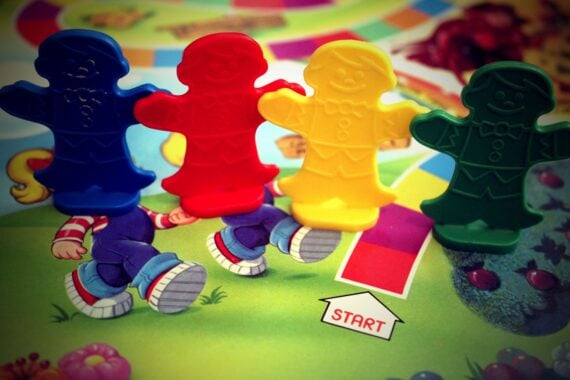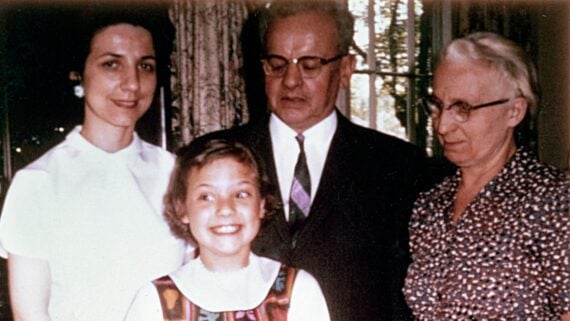Wanna play a game? How about a game about games? Any of the 15 games on this list would be fun for a family game night. Until then, have some fun guessing what each game is from a glimpse at their iconic pieces.
Related: 22 Things You Didn’t Know About Your Favorite Board Games
Thimble and Car

Answer: Monopoly
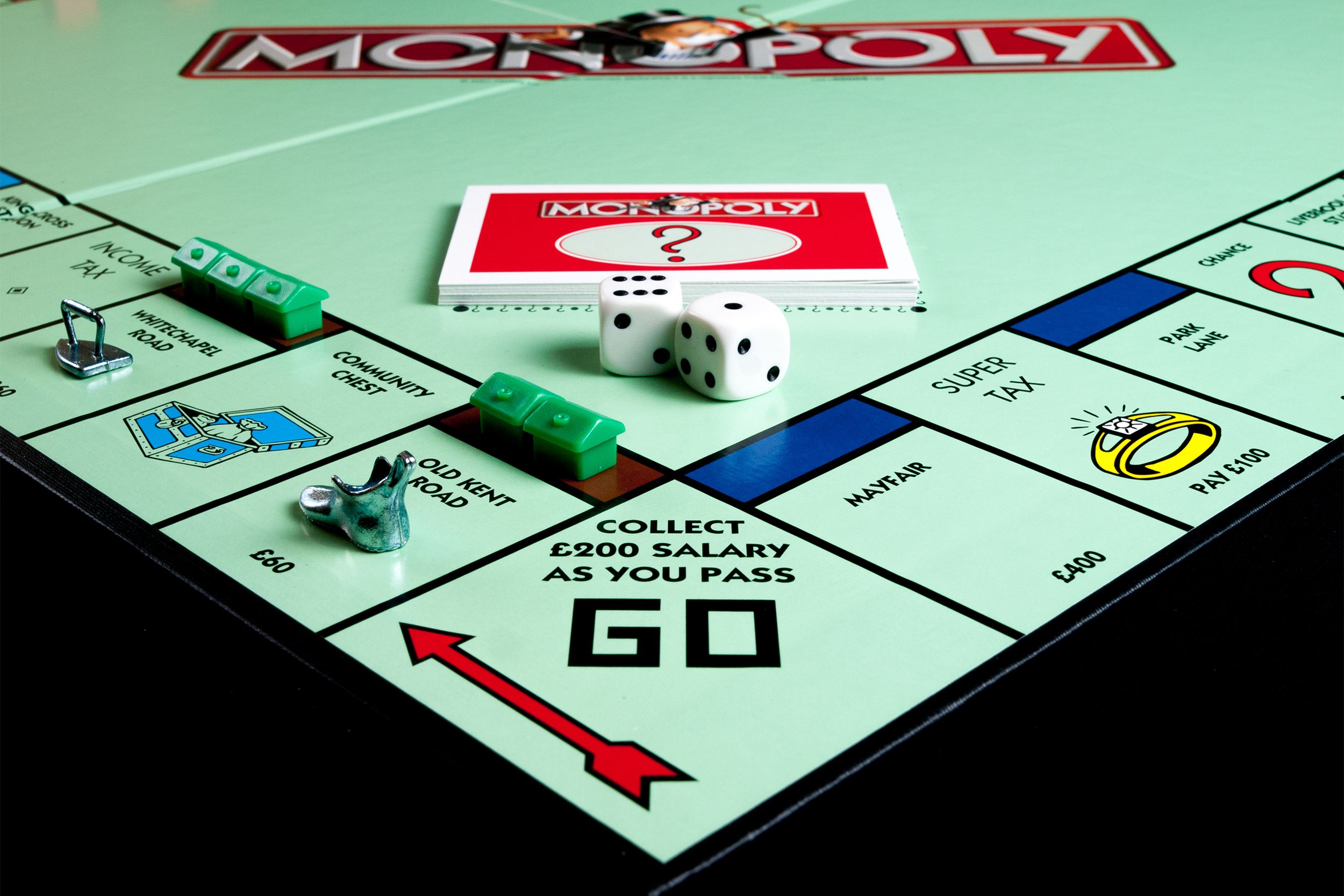
From 1903 to 1935, the game was passed around amongst friends and didn’t even have the name Monopoly. Charles Darrow sold it to Parker Brothers, but the original creator was Lizzie Magie. For generations, people have played Monopoly under its branded title. Other tie-in editions — and there are reputably more than 1,100 of them — transform the board to properties like “Pokemon,” “Star Trek,” “Lord of the Rings,” Disney’s theme parks, and more.
Weapons
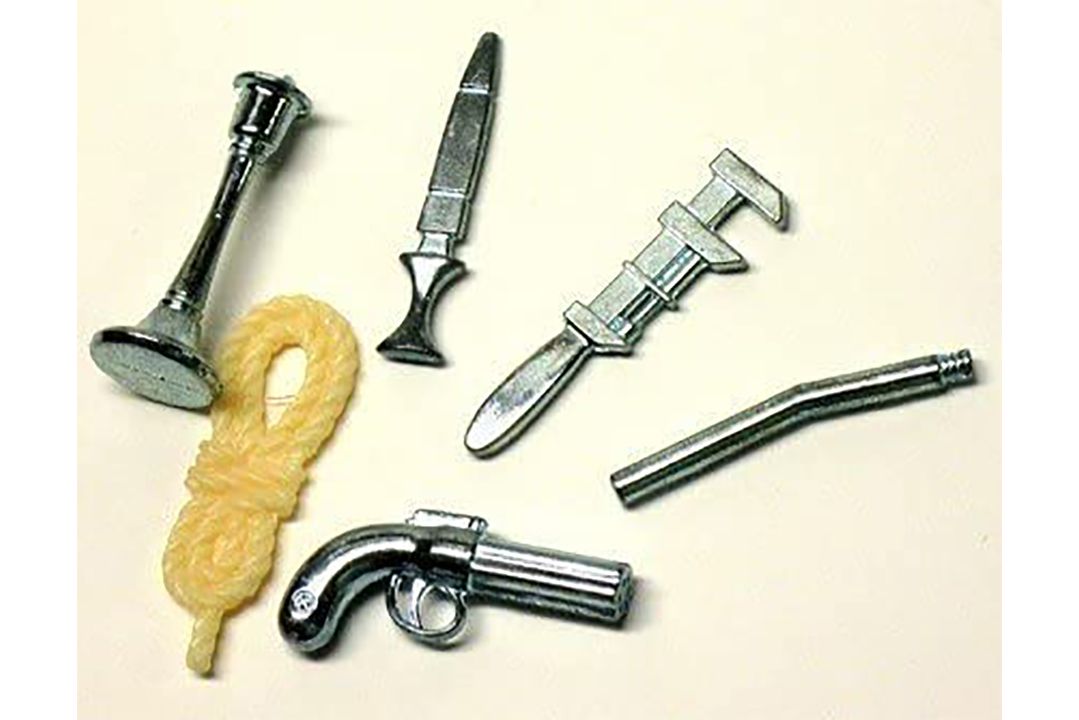
A gun, a candlestick, some rope, a knife, a pipe, and a wrench. Is this a board game or a selection of really random household items?
Answer: Clue
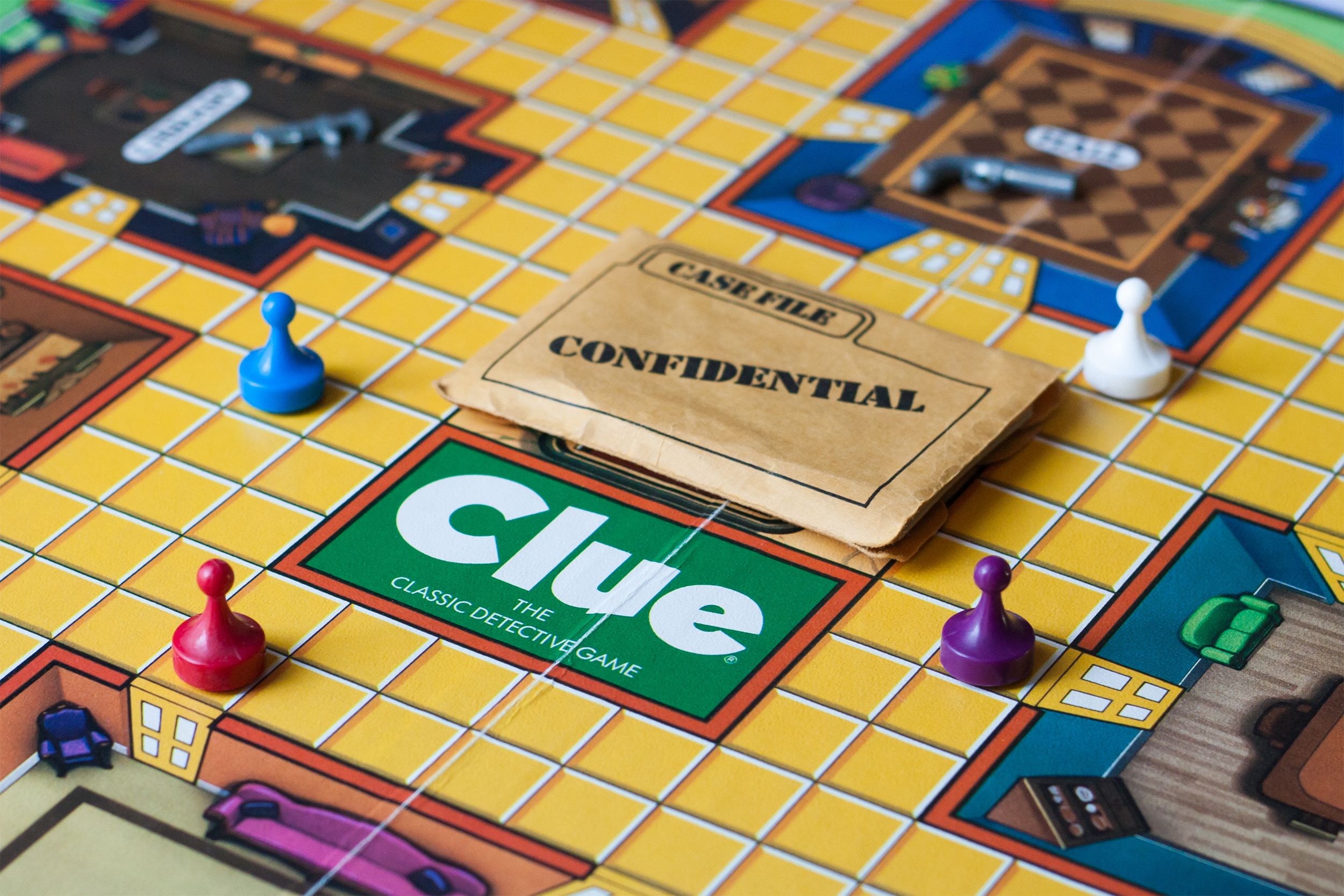
Of course, those objects are actually potential murder weapons in the classic board game Clue. The object of the game is to find out which character committed murder in which room with which object. The outcome is different in every game. Originally titled Murder!, and then Cluedo and created by Anthony Pratt, different editions of Clue change the characters, house, and weapons to fit themes like “Star Wars,” “The Simpsons,” “Game of Thrones,” or “The Walking Dead.”
Pie, Anyone?
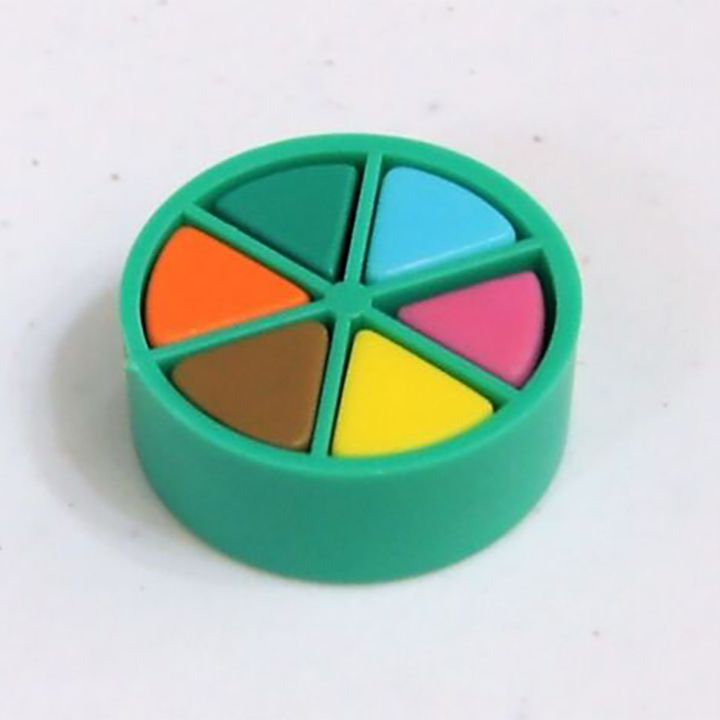
Trending on Cheapism
Answer: Trivial Pursuit

The first Trivial Pursuit game came out in 1981. That original edition is now called the Genus Edition. Updated versions of the game have focused on sports, movies, Disney, specific decades, and even the entire “Harry Potter” franchise, “Saturday Night Live,” and kid-friendly editions.
Related: 11 Classic Pinball Games That You’ll Flip Over
Color-Coded Armies
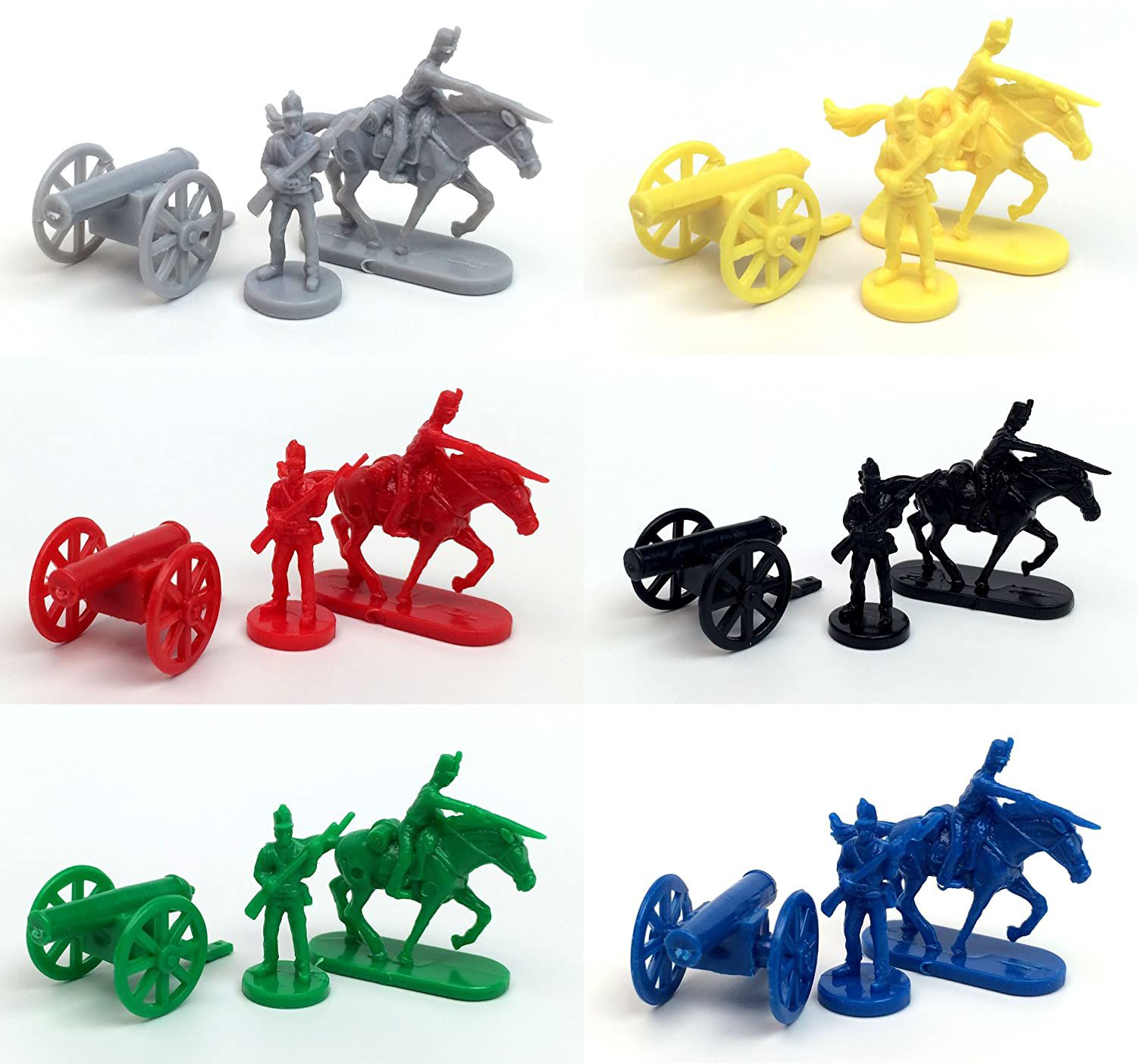
Answer: Risk
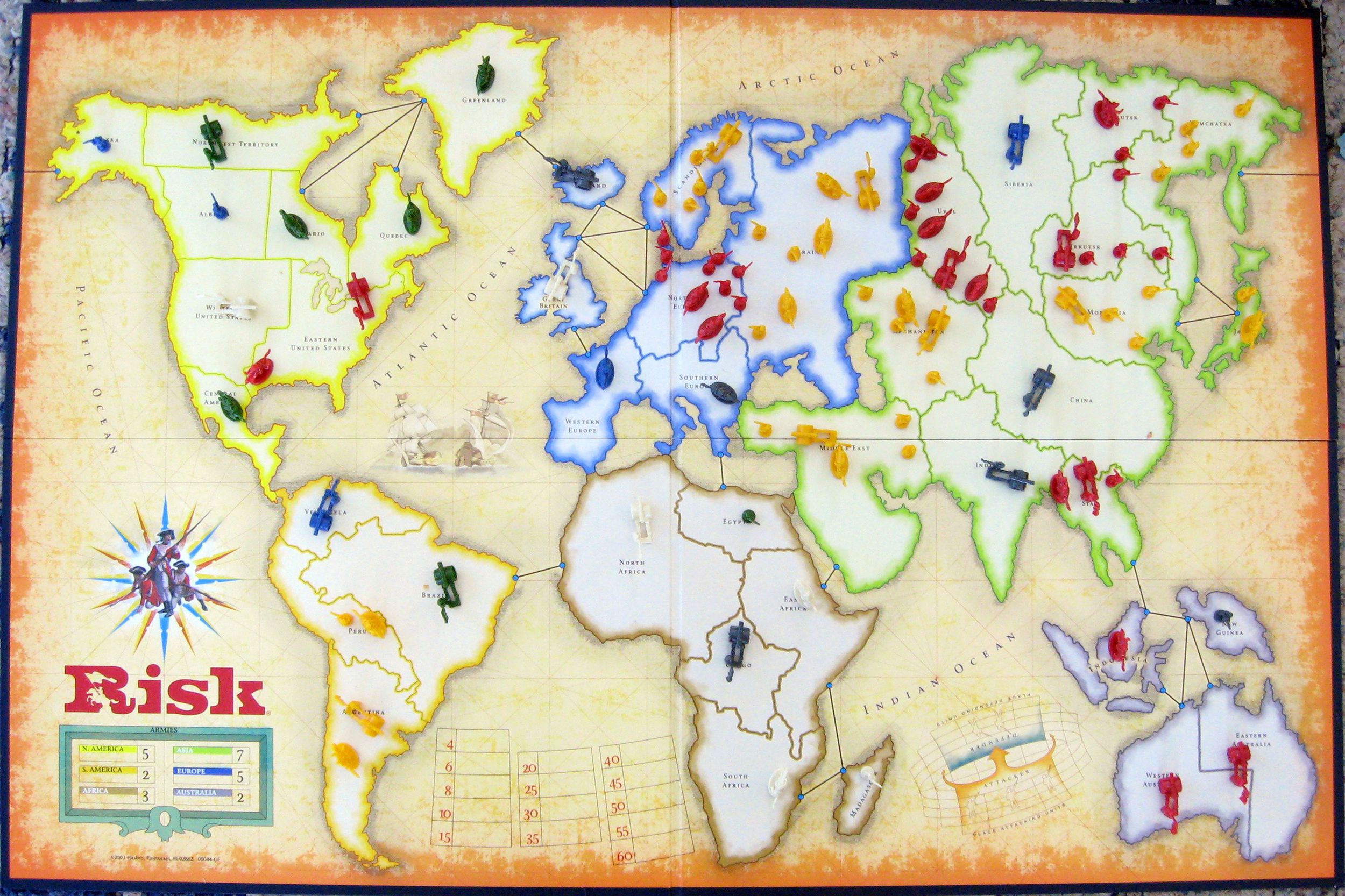
French filmmaker Albert Lamorisse created the board game Risk and Parker Brothers made the American version. The board is a map of the world and each player uses those army pieces to occupy a territory. Players roll the dice and try to strategically conquer each other’s territories, drawing special cards to use to their advantage.
Sign up for our newsletter
Car With Pegs

Answer: The Game of Life
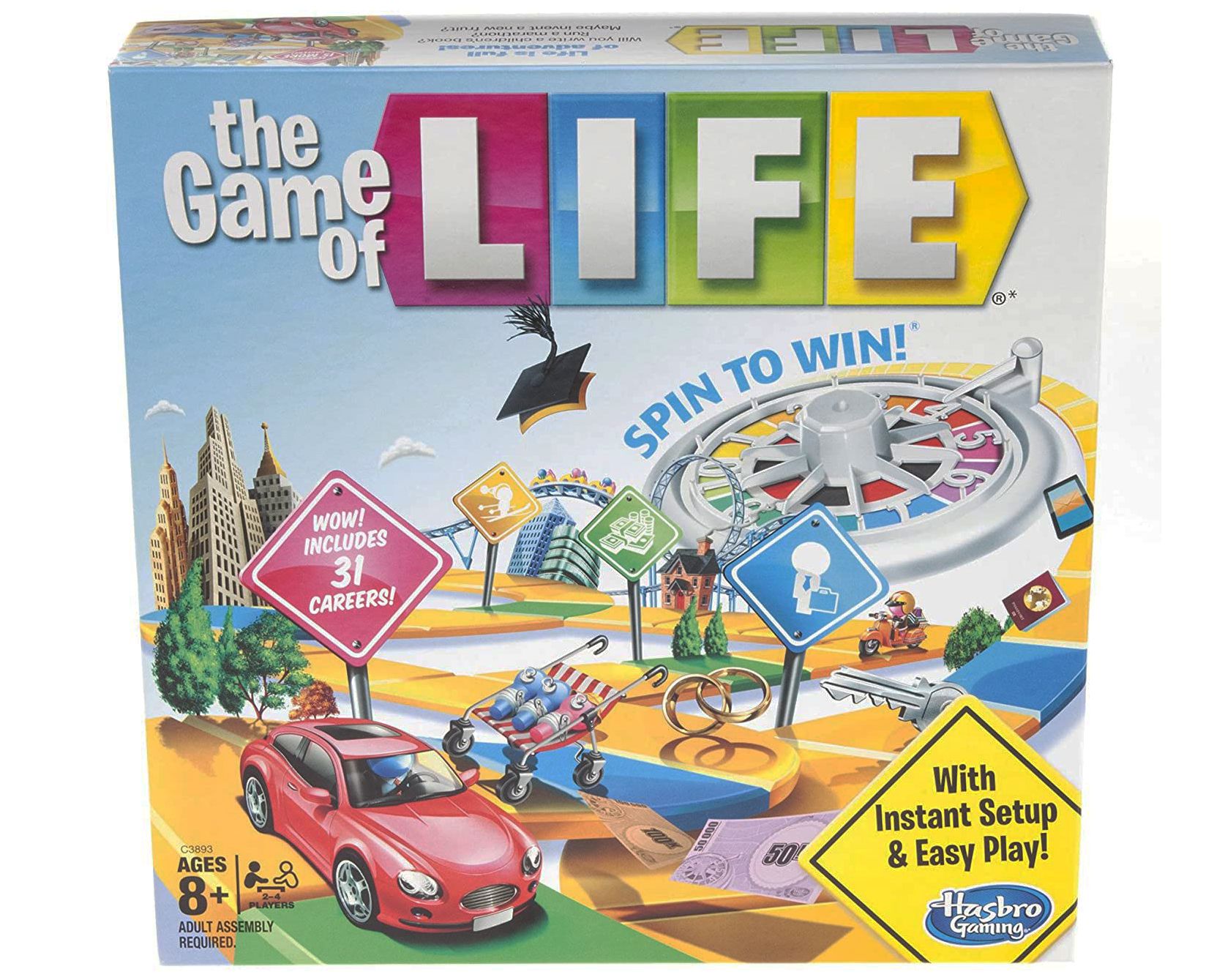
When Milton Bradley invented Life in the 1860s, it included the risk of suicide, jail time, and other extreme possibilities for losing the game. In the 20th century, it became more mainstream. You spin the spinner and move around the game board in order to start a career and family. Those pegs? They represent parents and children.
Multi-Hued Kids
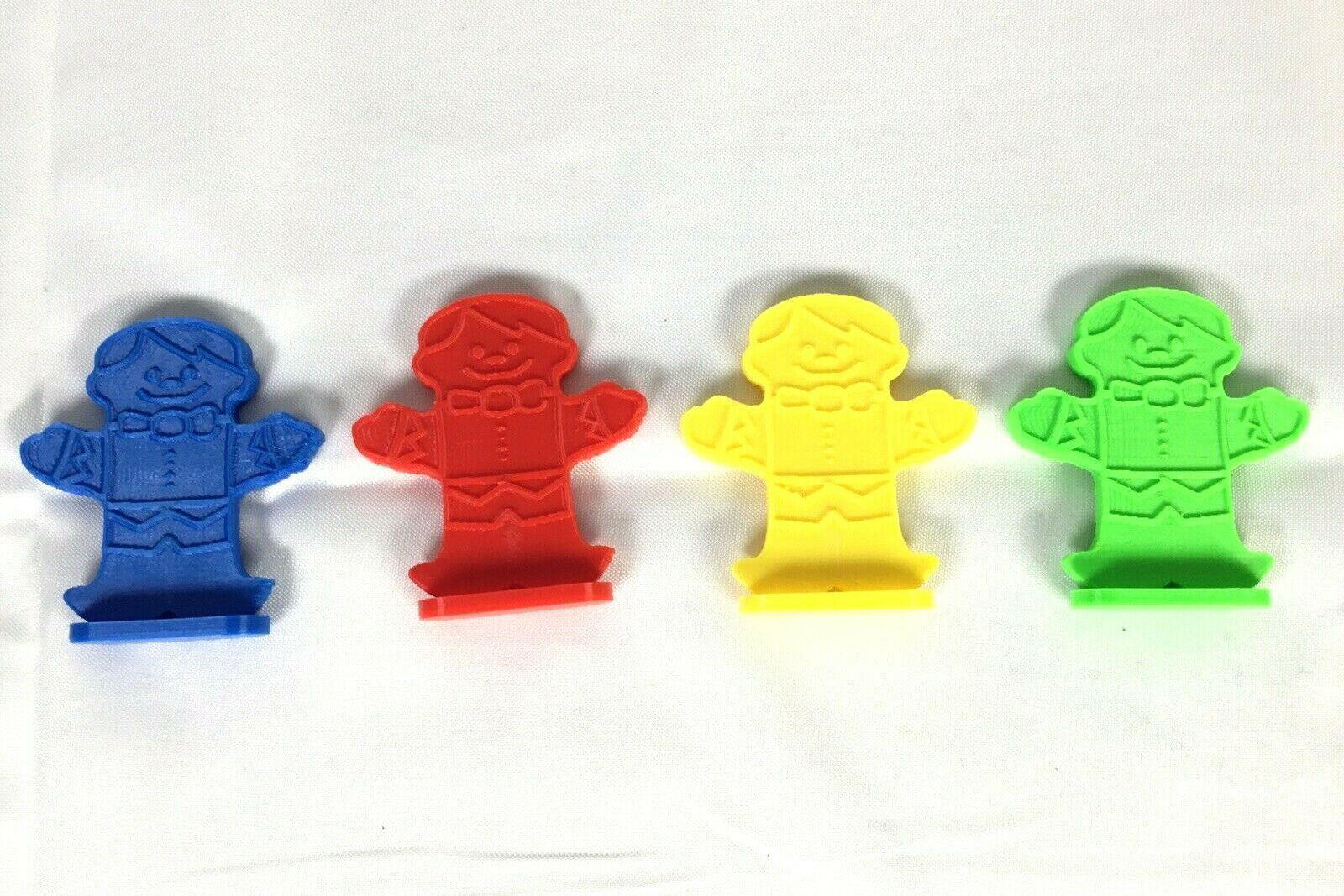
Answer: Candy Land

Candy Land is an easy game for very young children. All you have to do is pick a card and move your little kid piece to the first color or candy item depicted on the card. Eleanor Abbott invented Candy Land in the 1940s during the polio epidemic, as a way for recuperating children to pass the time.
Spinner
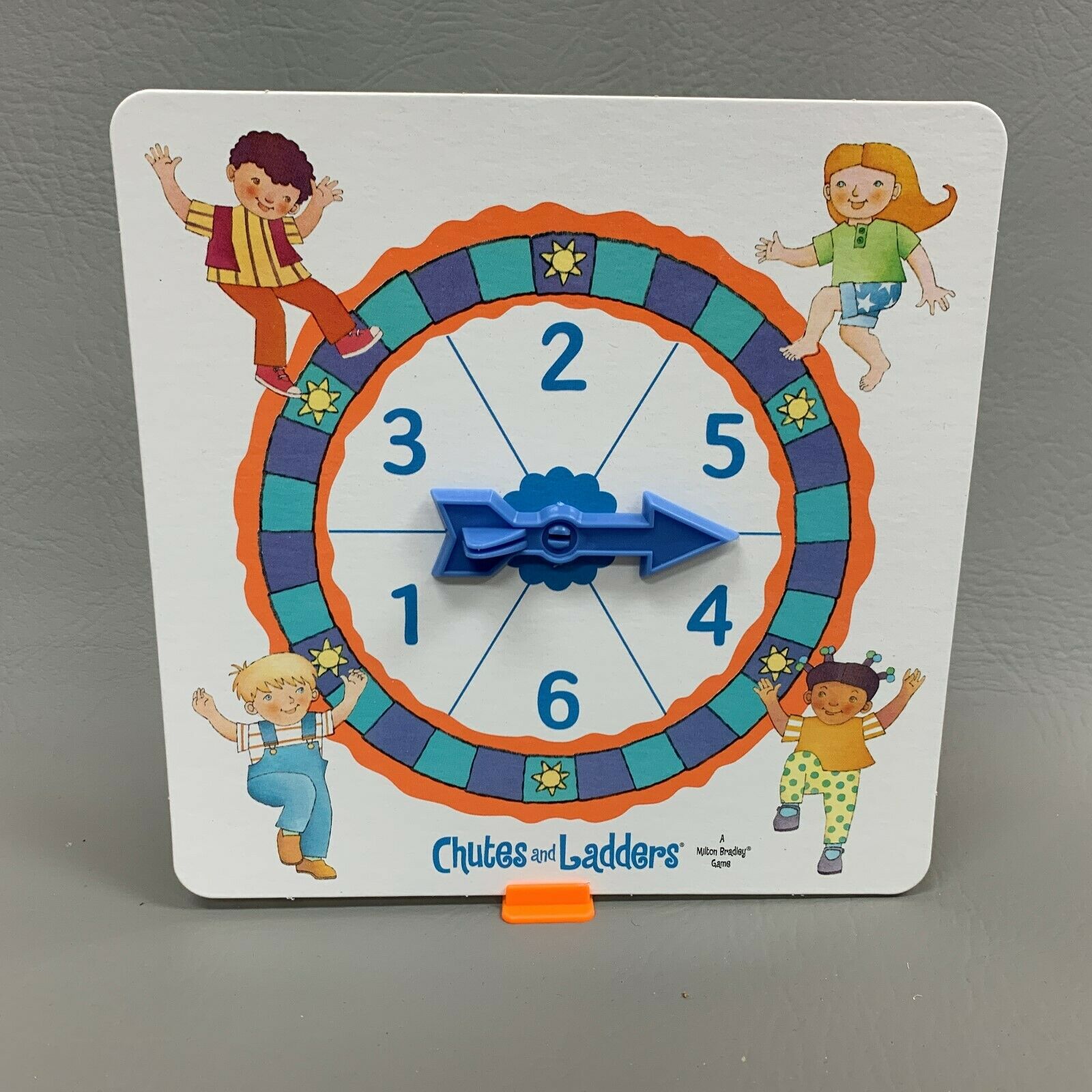
Answer: Chutes and Ladders
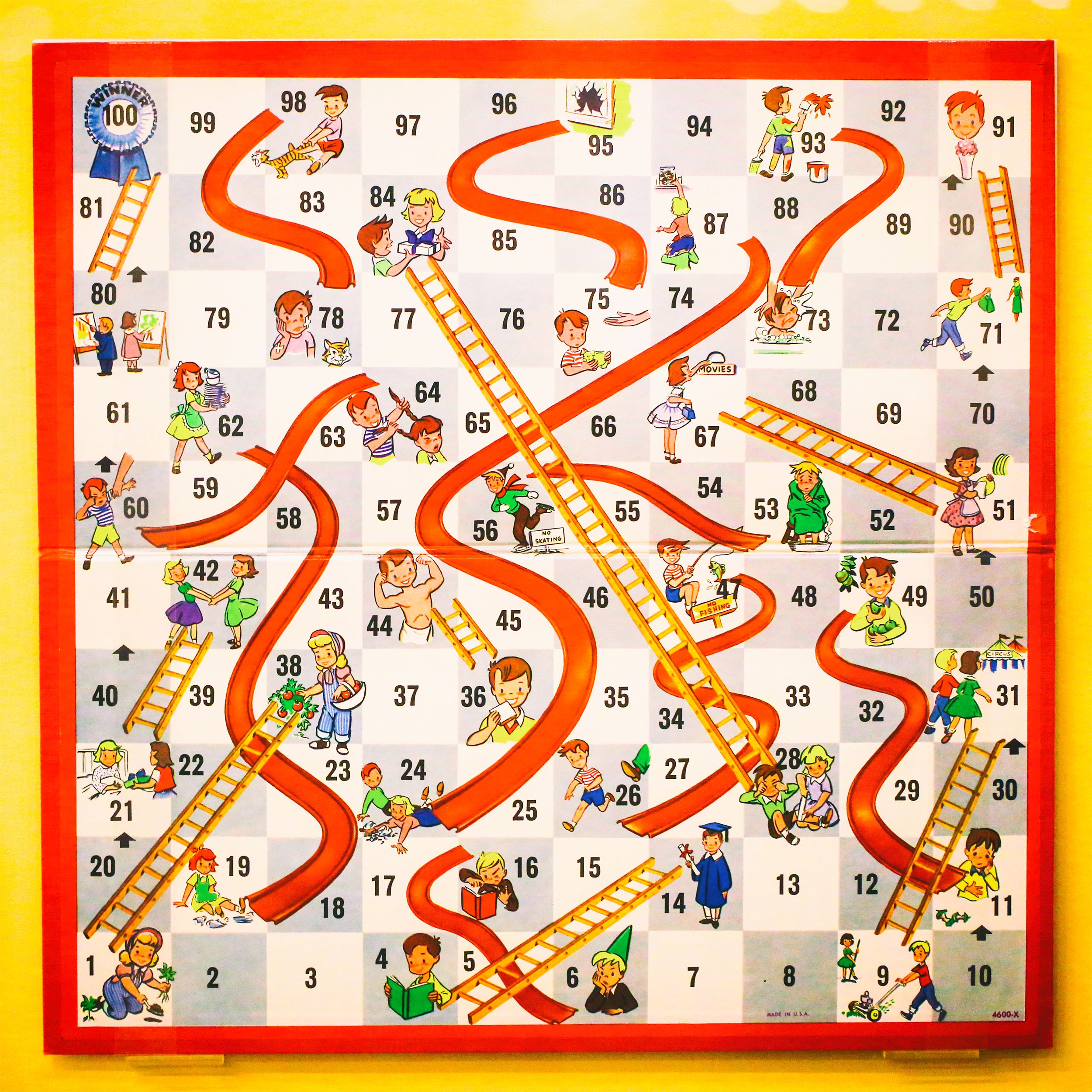
Originally Snakes and Ladders, Milton Bradley decided chutes were more marketable than snakes in 1943. The rules of the game remain the same. Players try to climb up the ladders to the top of the board, but a bad spin could send you back down via snake, er, we mean chutes.
Colorful Pawns
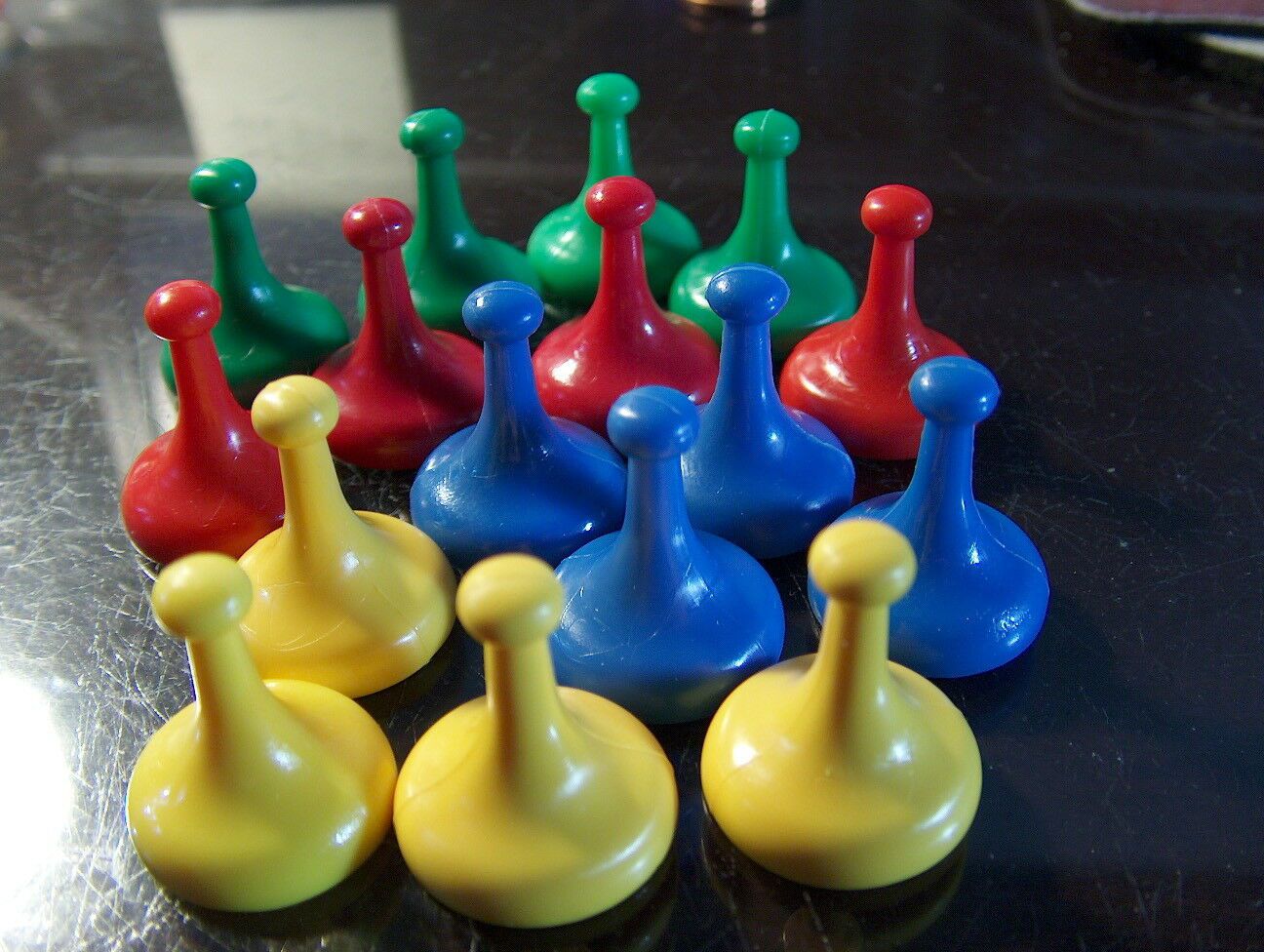
Answer: Sorry!

Parker Brothers debuted Sorry! in 1934. Each player moves their pegs of the same color by drawing cards, with the goal of moving them home. The title comes from “sorry” cards, which allow players to switch places with another, sending them backward in the game.
And More Colorful Pawns
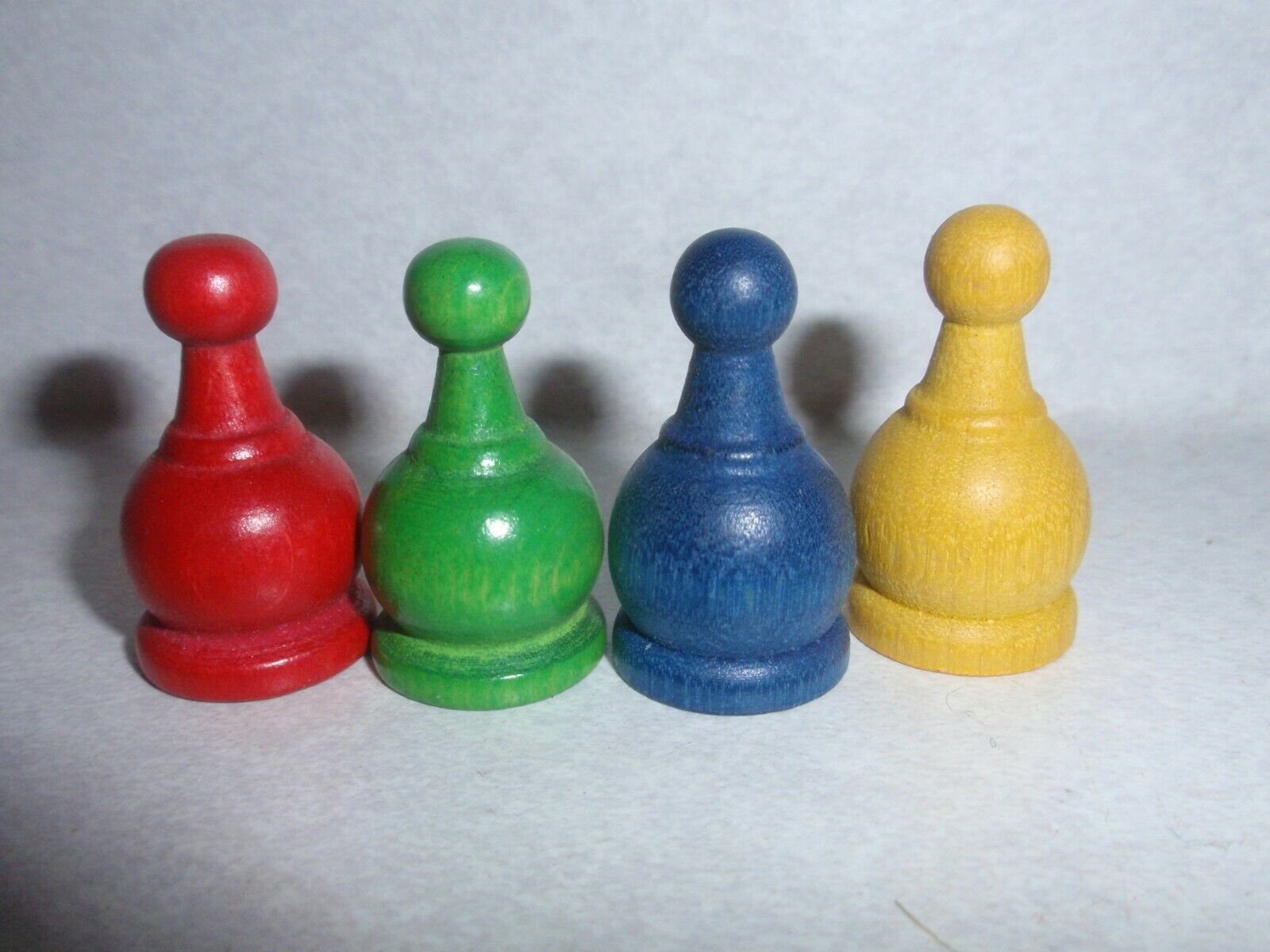
Answer: Parcheesi
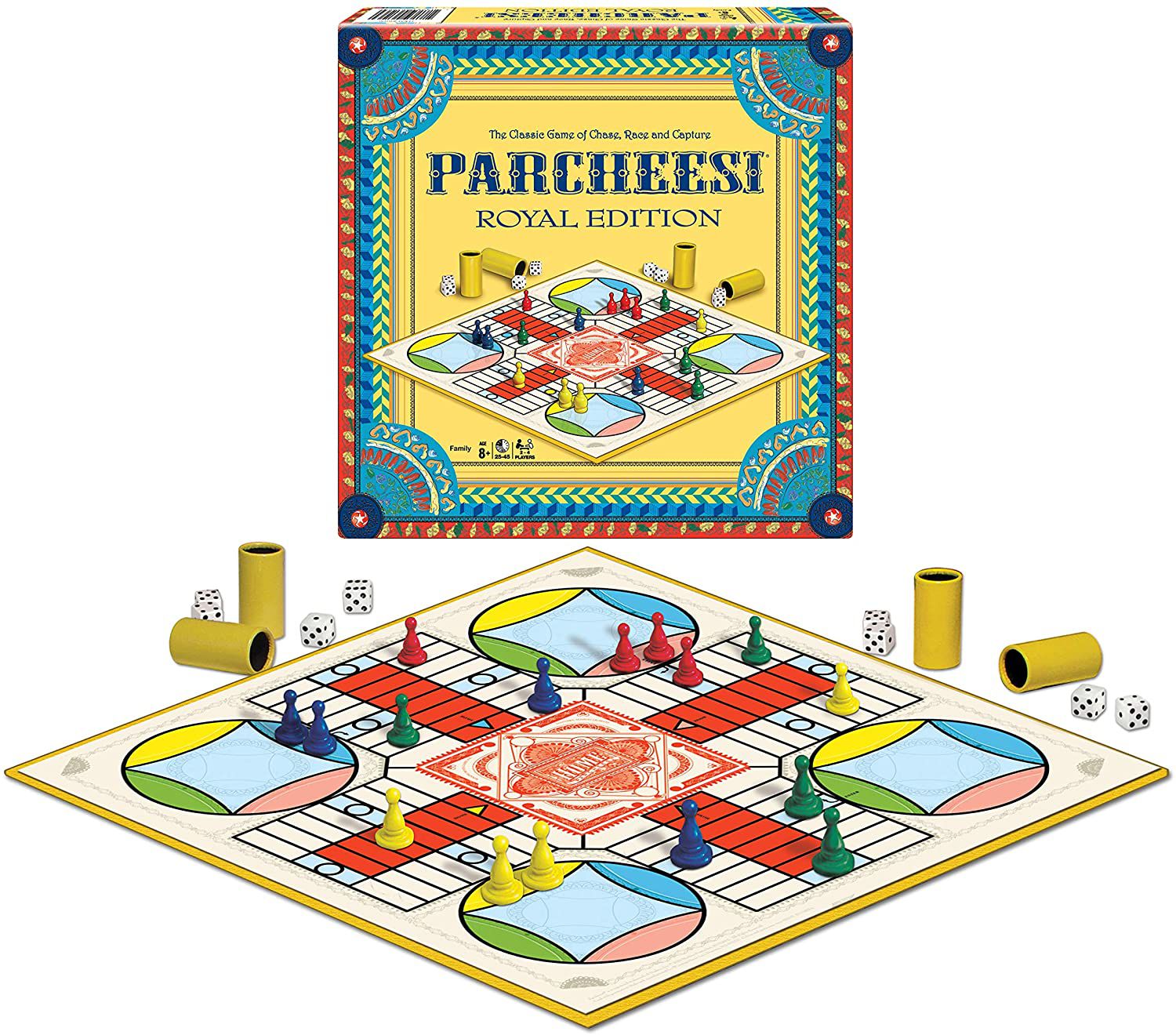
If Parcheesi pieces look a lot like Sorry pieces, there’s a reason for that: Both were adapted from the same Indian game called Pachisi. The Milton Bradley and Parker Brothers Parcheesi version is more like the Indian game than Sorry. You still have to move four pieces home, but instead of cards, you roll dice. You can knock opponents out of their spots or form a blockade with two of your own pieces in the same spot.
Letter Tiles
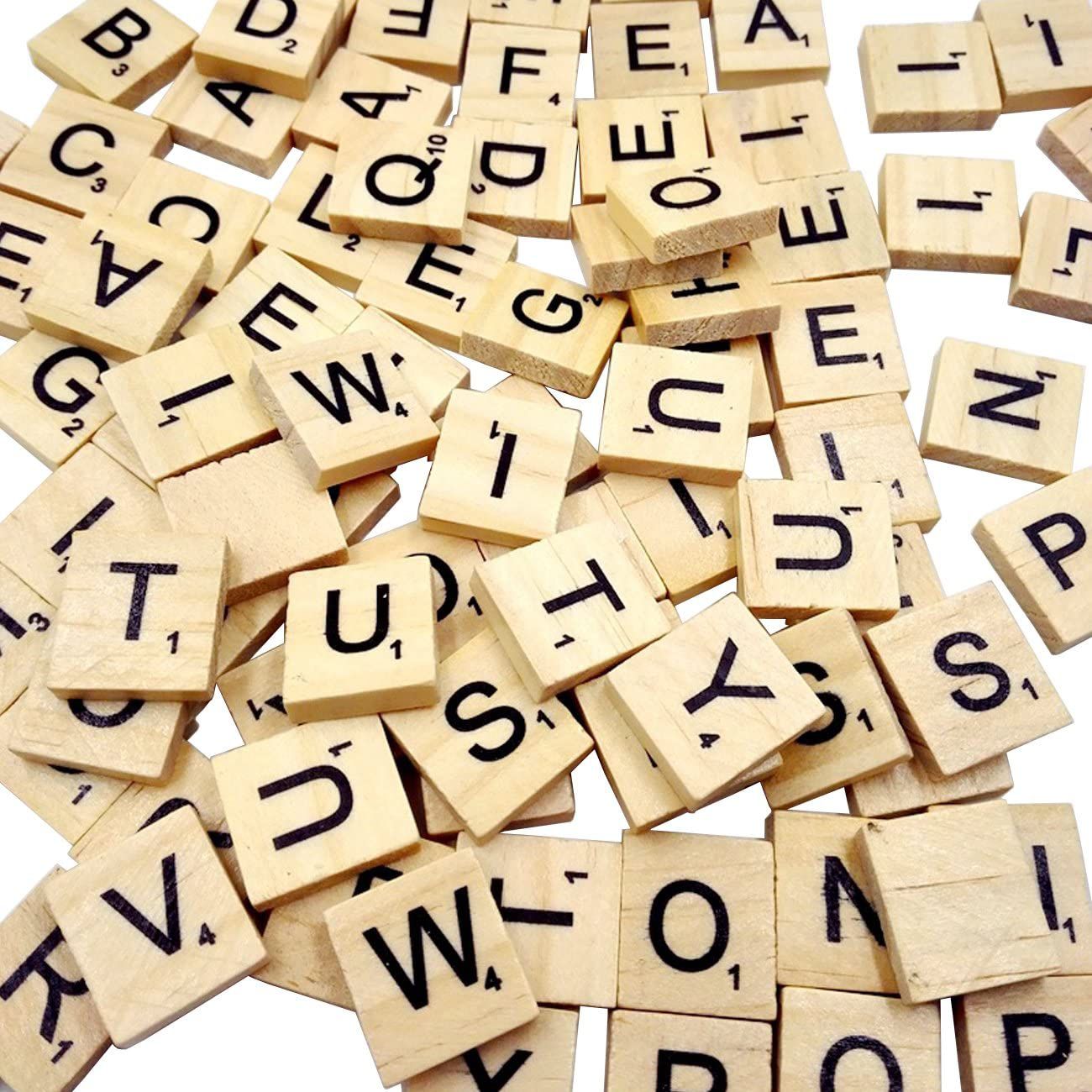
Answer: Scrabble
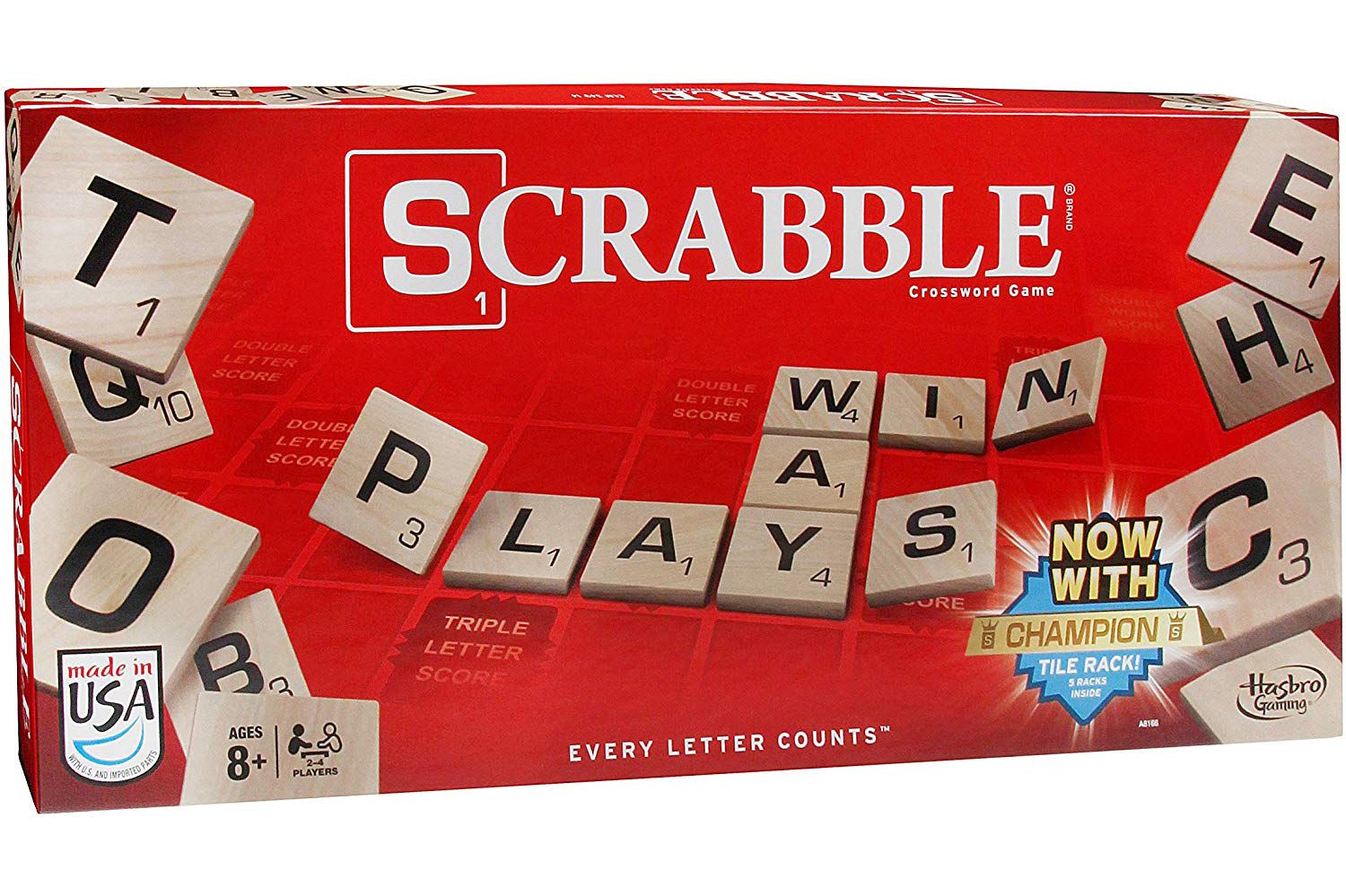
Alfred Mosher Butts invented Lexiko (which later changed to Criss Cross Words) in the 1930s and patented it as Scrabble in 1948.
Brown and White Checkers
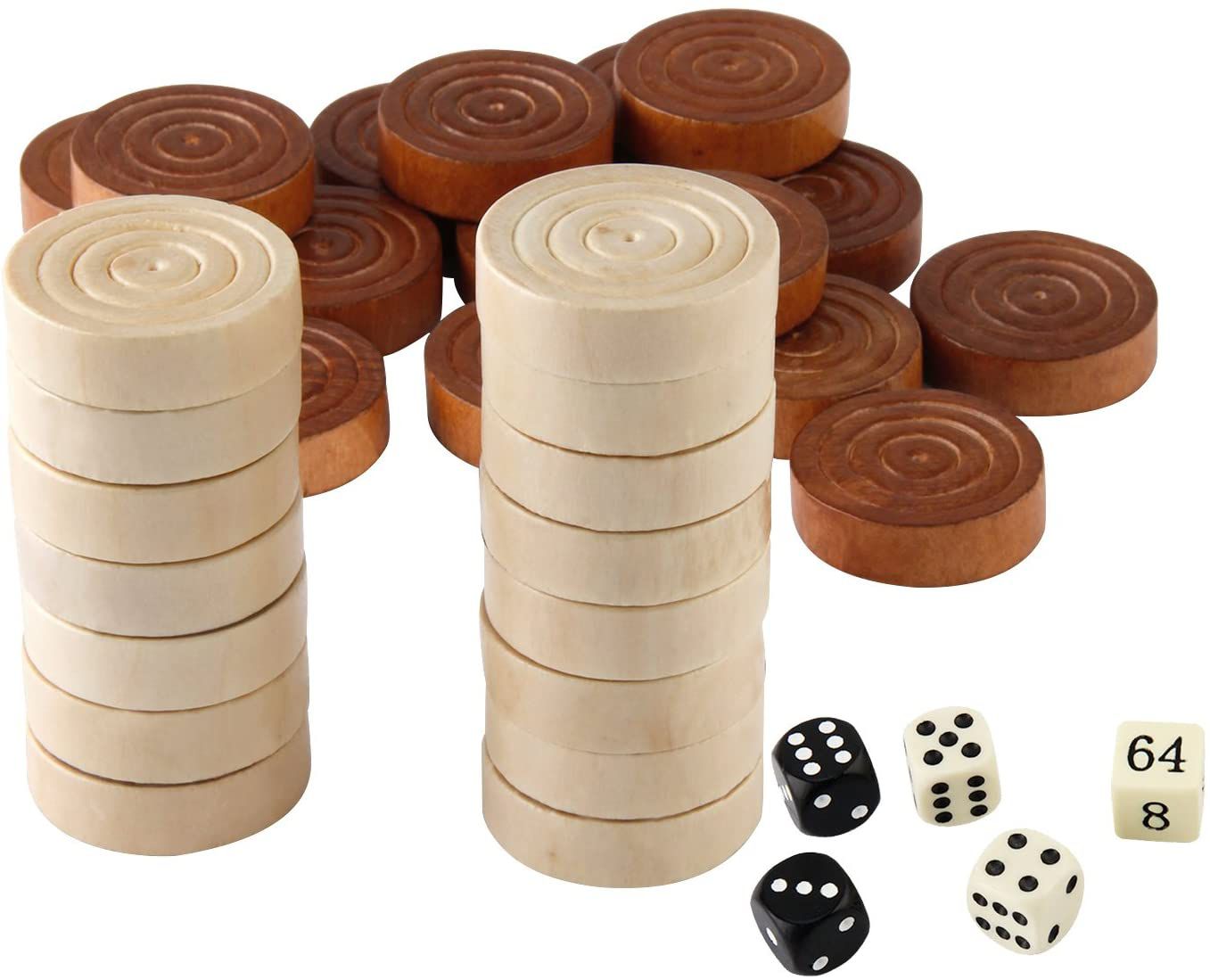
Answer: Backgammon
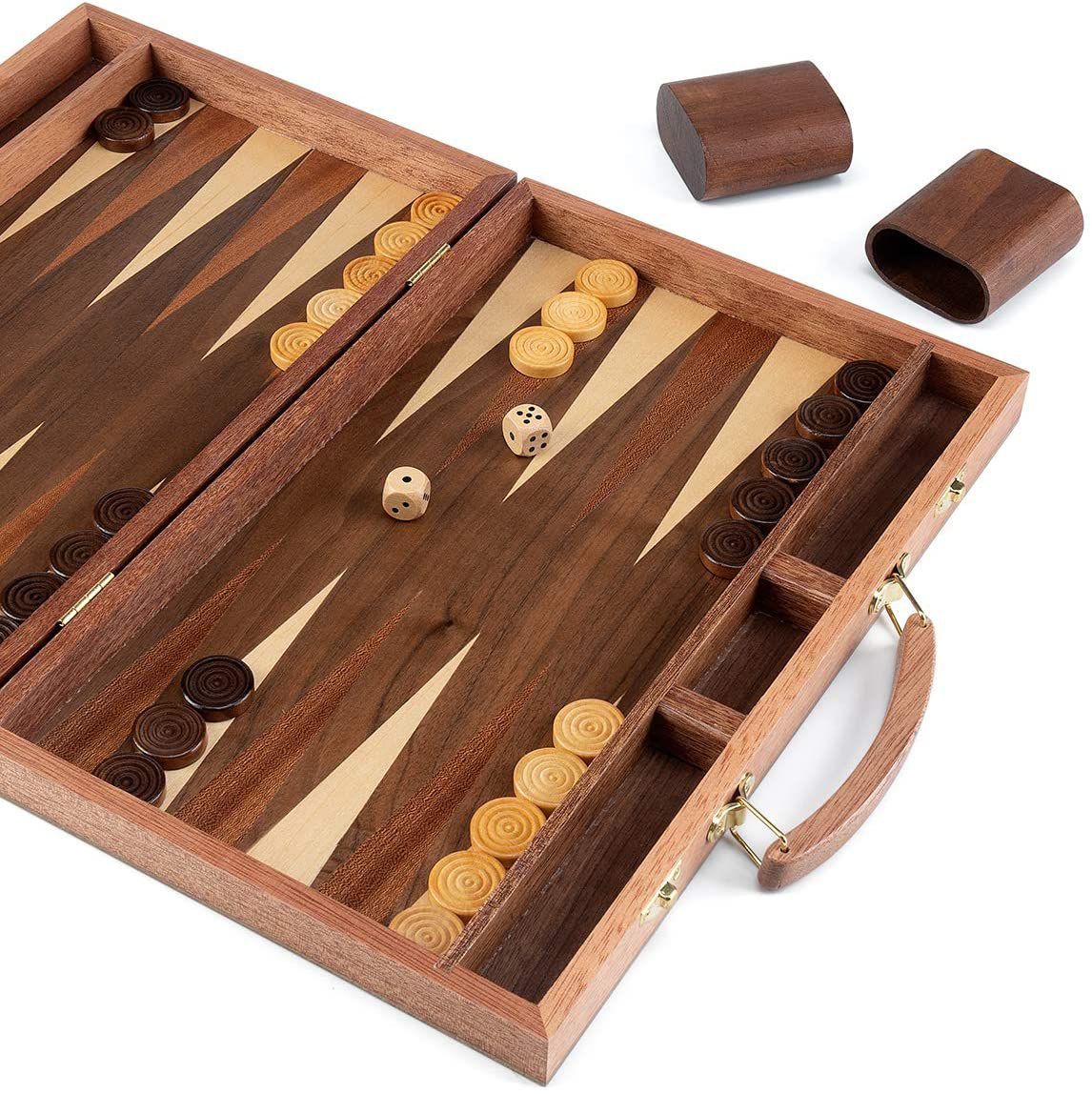
A Different Kind of Die
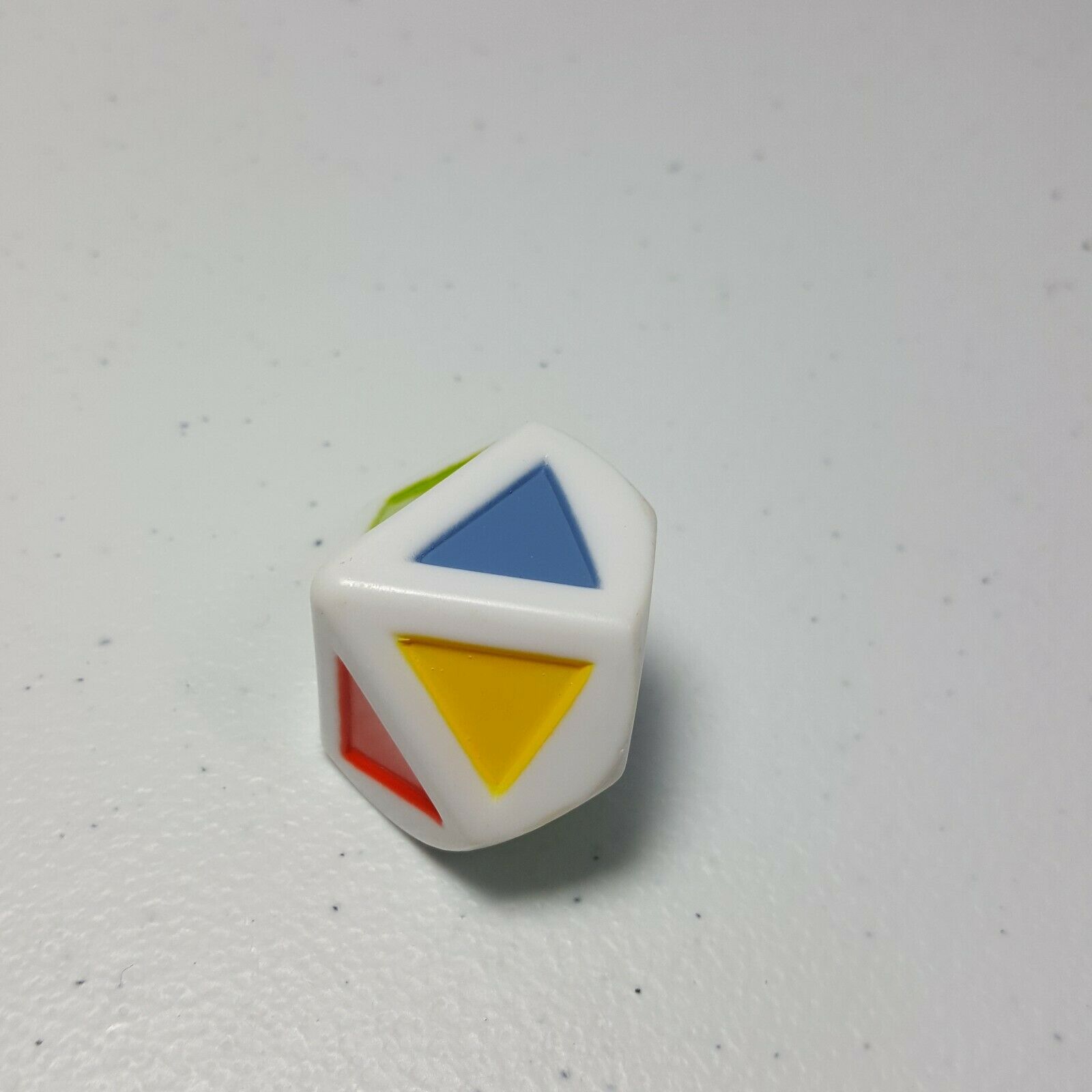
You definitely can’t play Craps with this die. There are so many possibilities, this game could make your head spin.
Answer: Cranium
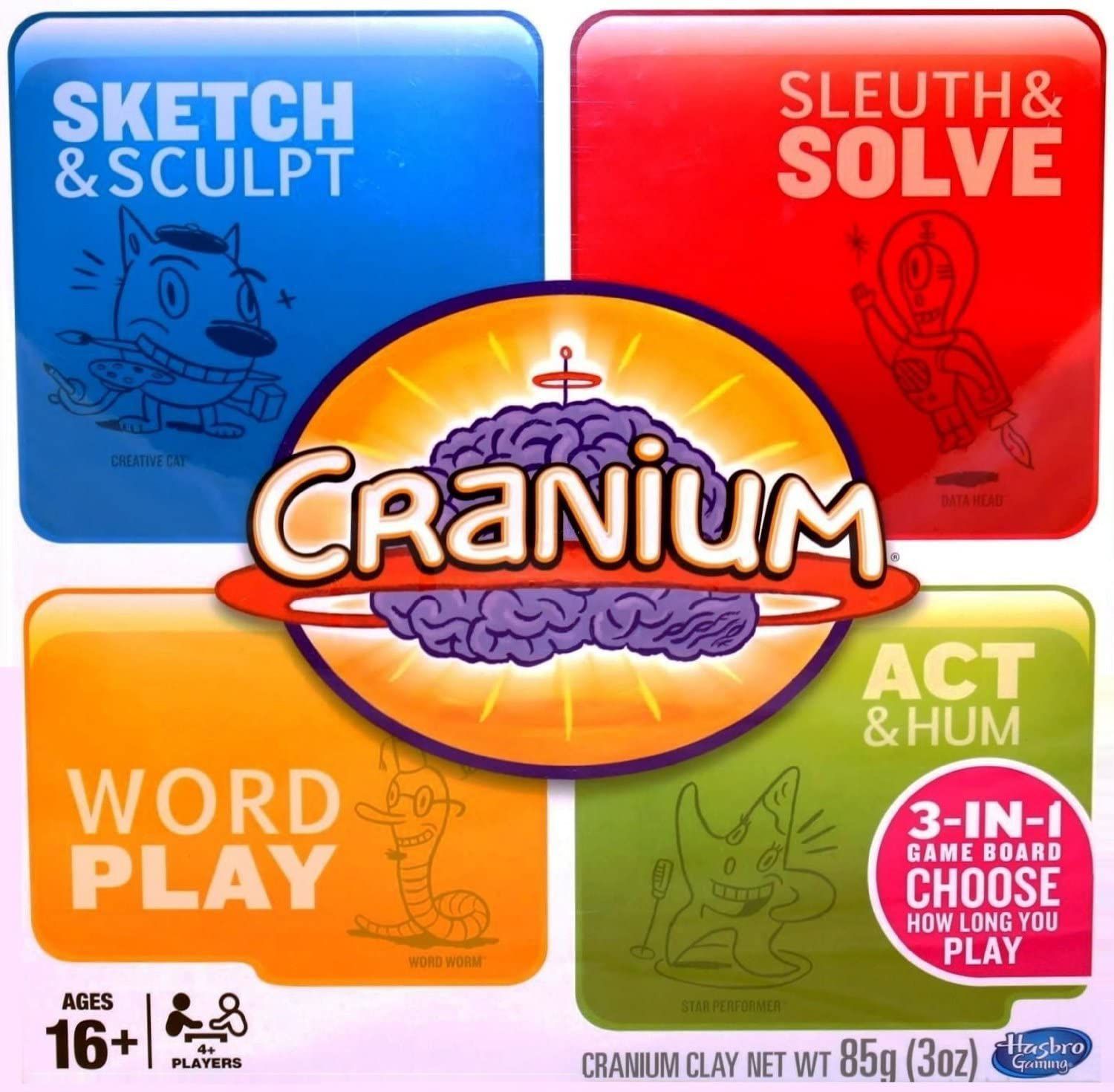
The newest game on this list, Cranium was invented in the ’90s by Whit Alexander and Richard Tait and started selling it in 1998 at Starbucks locations. By 2001 they were selling a million games a year. The board part is simple. It’s the game that’s hard. Teams of players advance around the board, and depending on where they land they might have to play charades, draw something, make something out of clay, and more. If they’re lucky, it’ll just be a trivia question!
Related: 28 Incredibly Fun Toys for Adults
Reversible Checkers
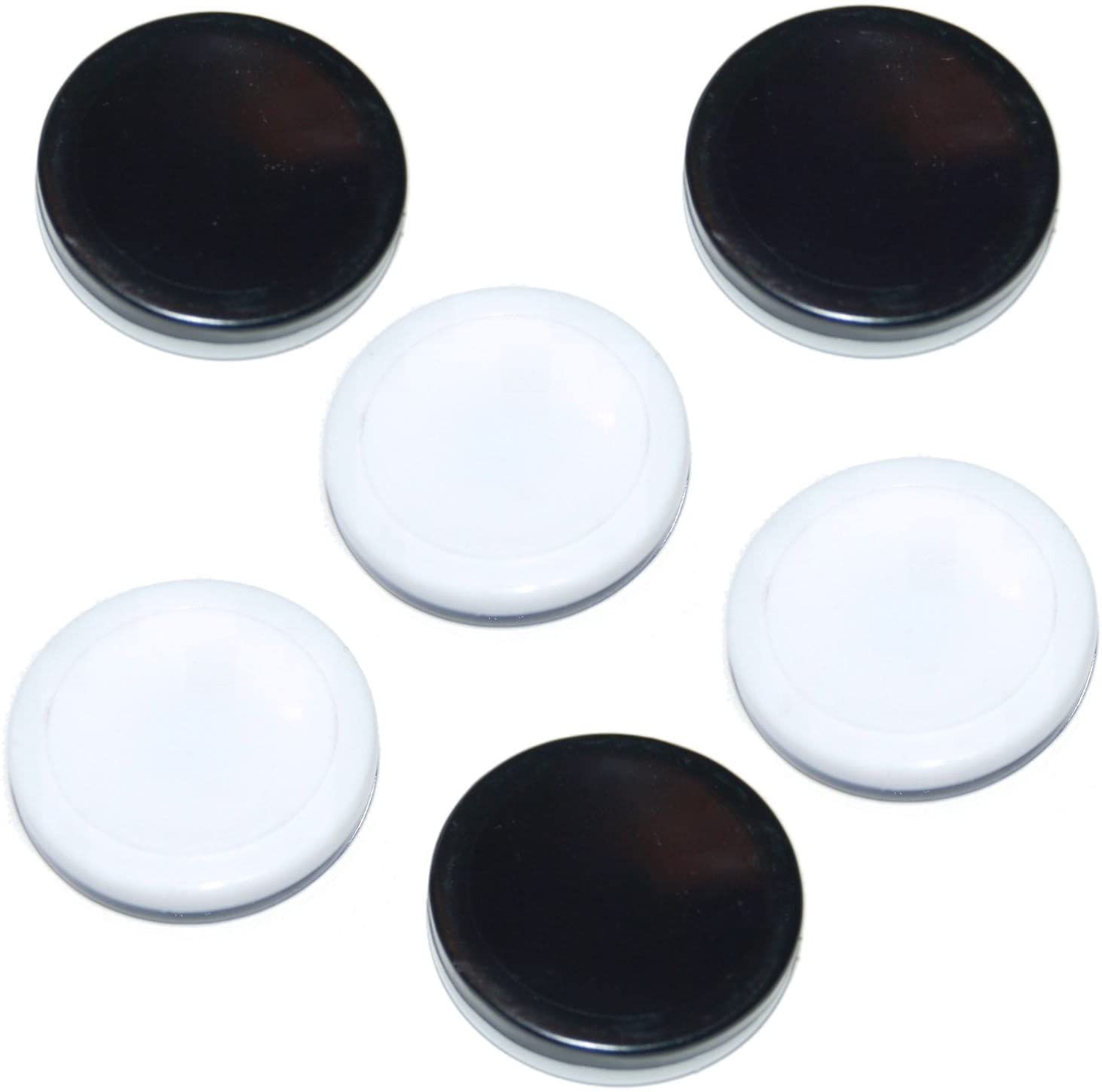
The game these come from has also been called Reversi. Why? Because these black-and-white pieces are reversible. But what’s the game known as now?
Answer: Othello
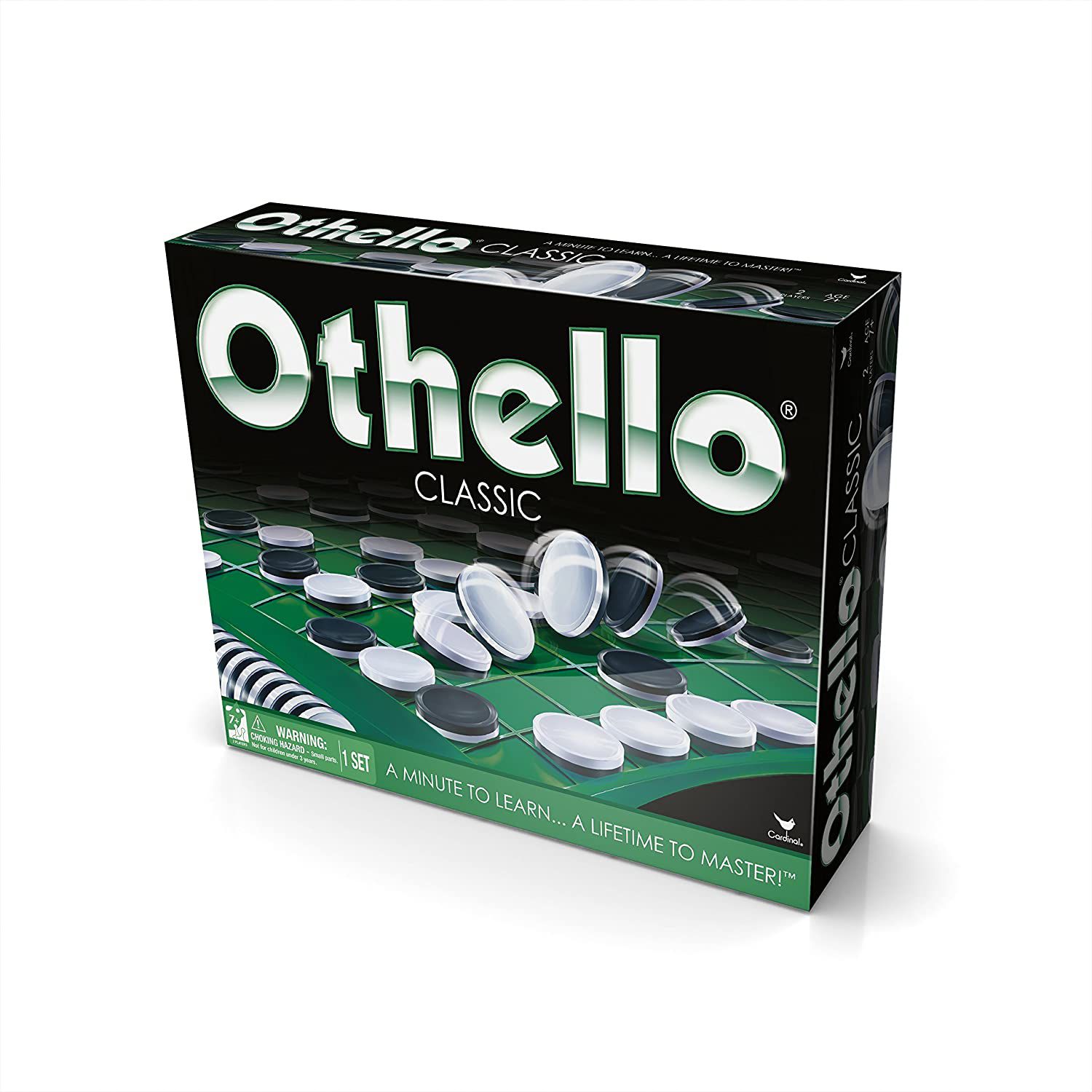
There’s debate over who invented Reversi, the precursor to Othello. Both Lewis Waterman and John W. Mollett claimed to invent it in the 1880s. But it was Goro Hasegawa who created a version in the 1970s and named it Othello, after Shakespeare’s tragedy of the Moor. Each player begins with black or white checkers and places one per turn. The strategy is in making lines or boxing in opponent checkers so you can flip them to your color.
Red, Yellow, Blue, and Green Again
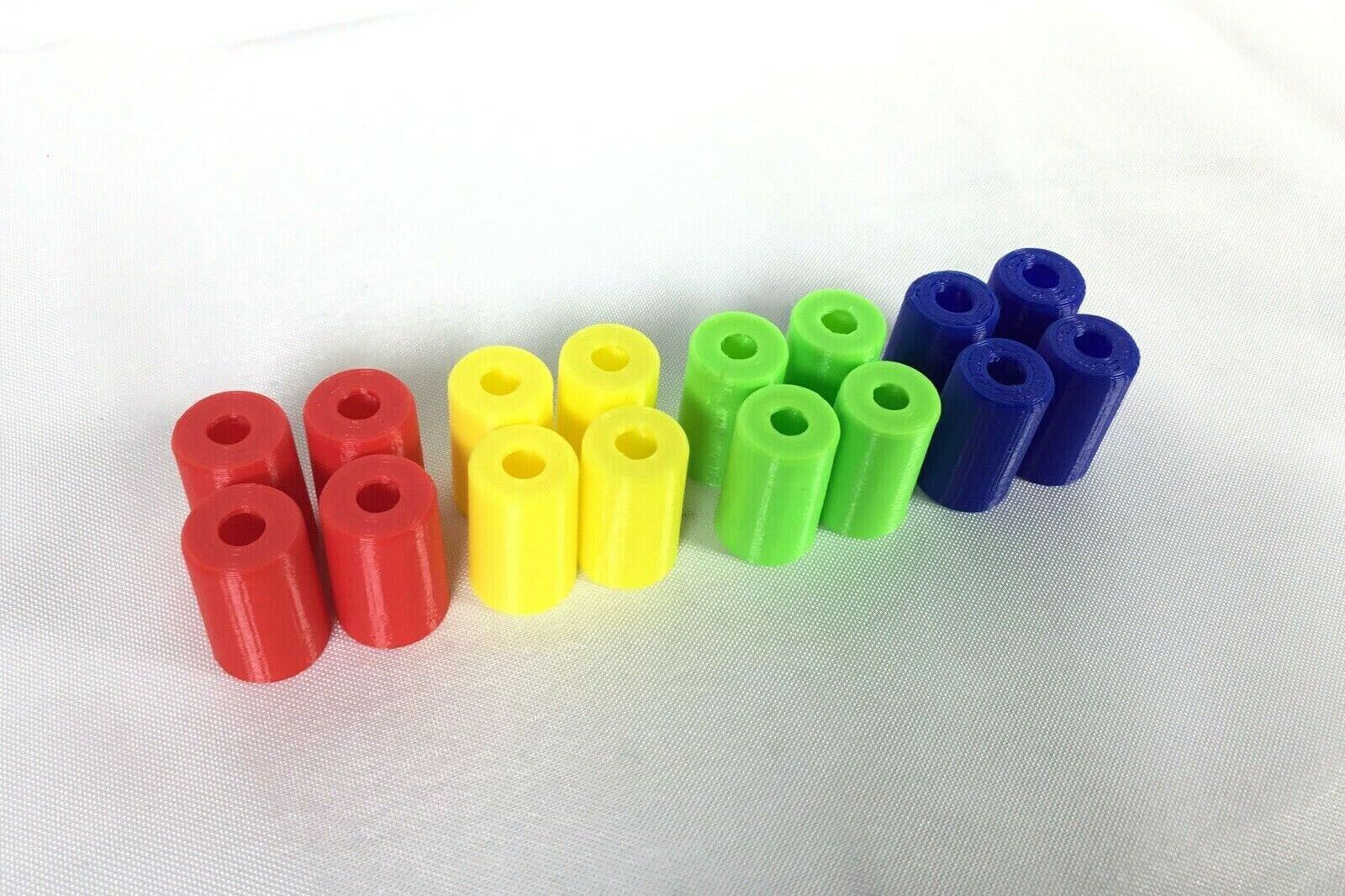
Answer: Trouble
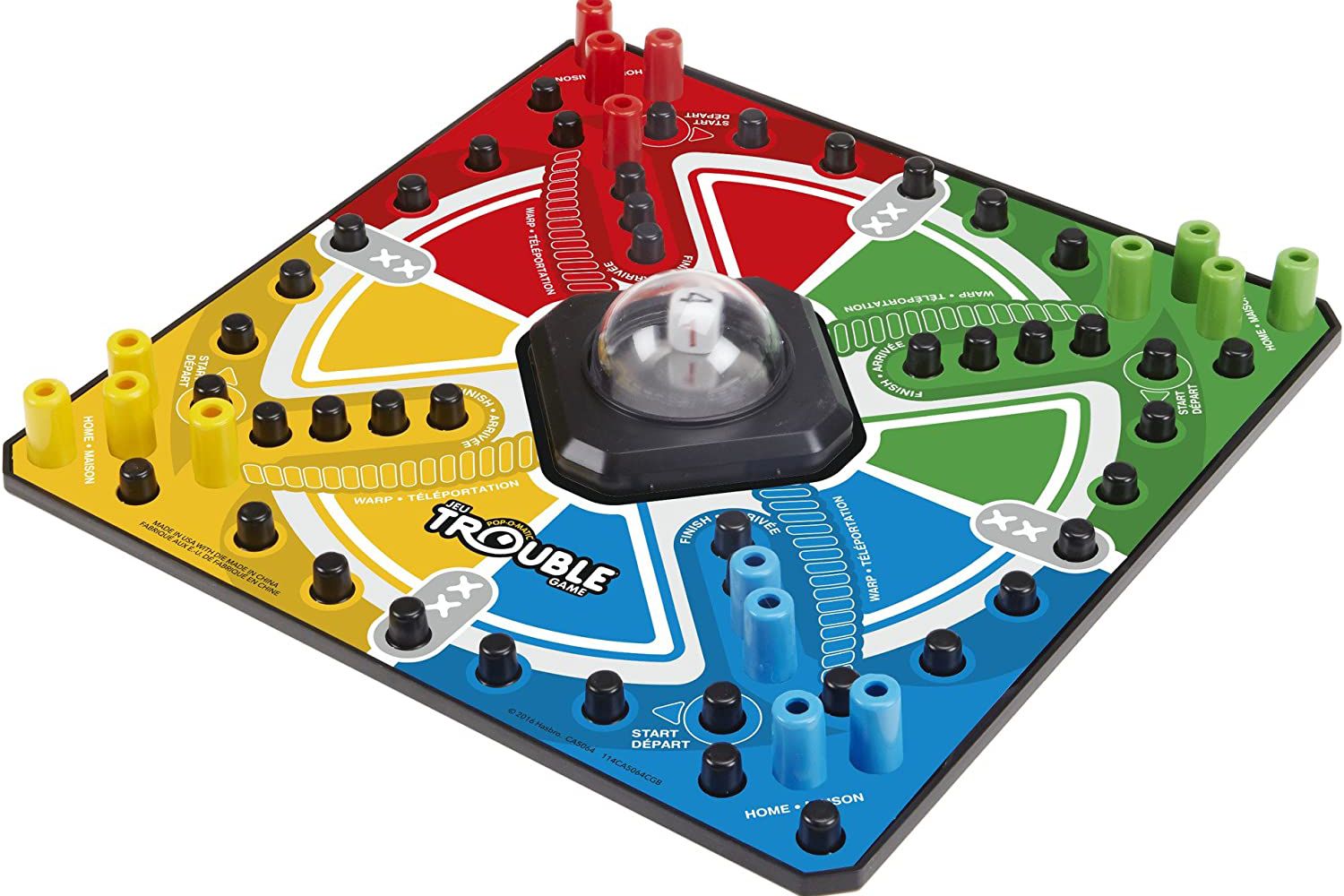
Invented by the Finnish Kohner Brothers, Milton Bradley brought it to the U.S. in 1965. Like Sorry And Parcheesi, players have to move four pieces across the board. The twist is you can’t touch the dice. A popper in the center of the board rolls for you. If you need more Trouble, the sequel Double Trouble gives the board a much more twisty path.
Flags, Bombs, and More
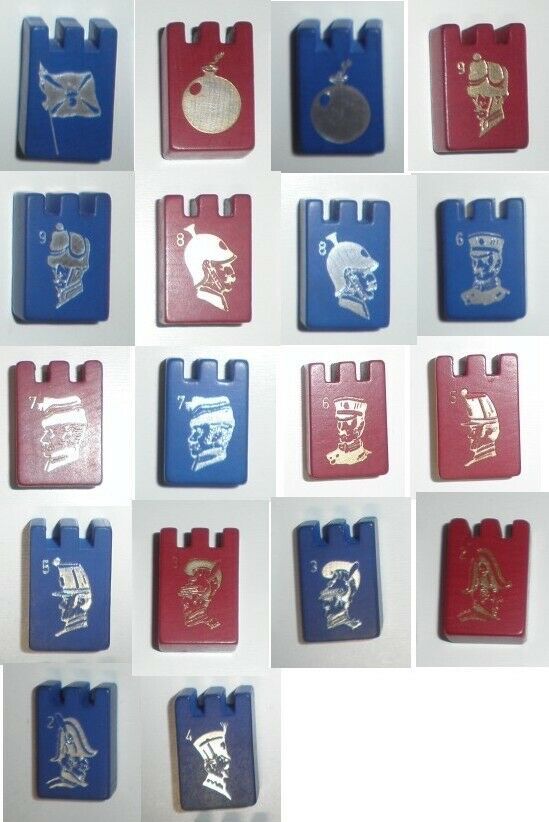
Answer: Stratego
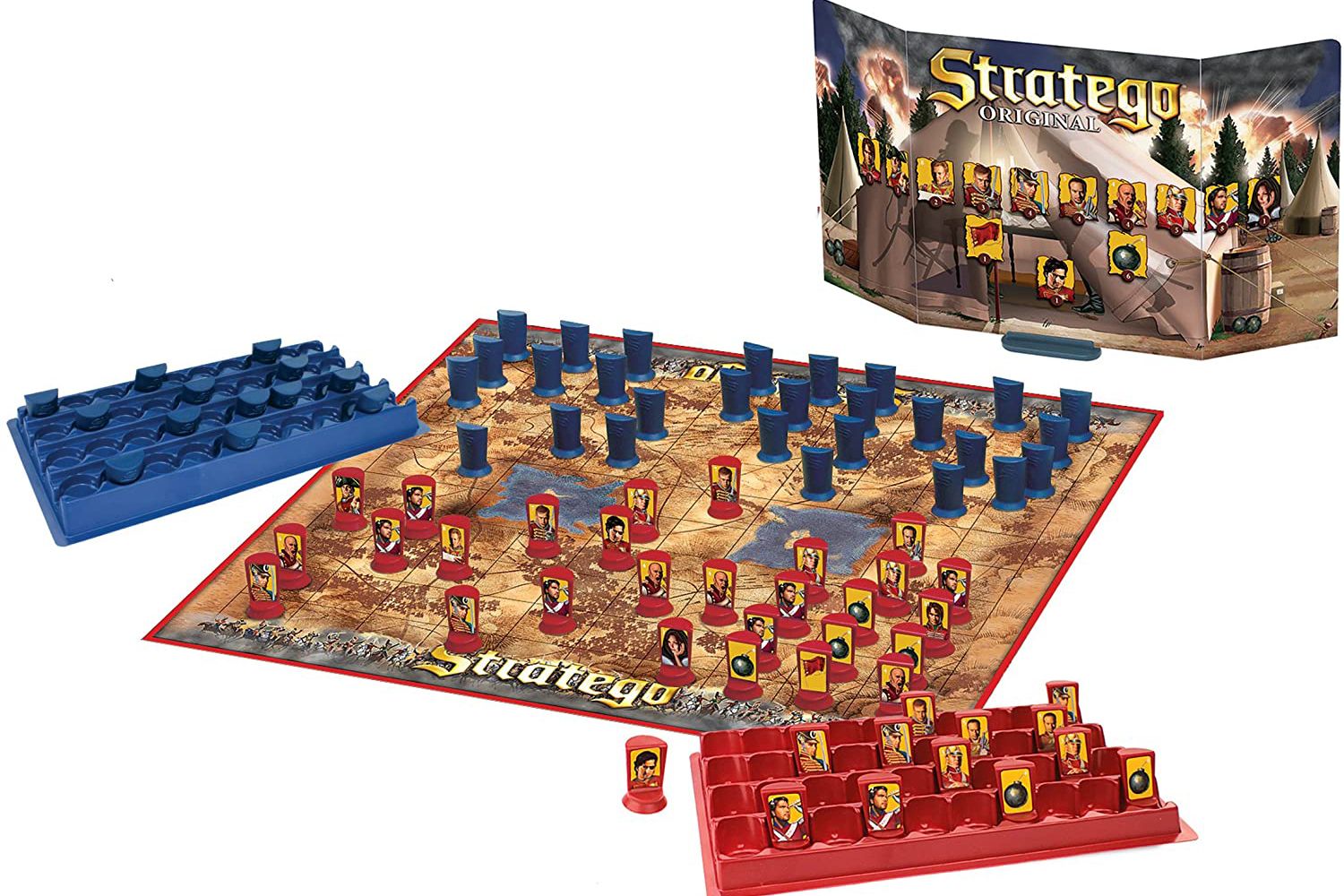
Jacques Johan Mogendorff invented Stratego during World War II and first published the game in 1947. This two-player game pits army against army. Each unit has a different point value, so players lay them out on the board strategically. When a player moves onto another player’s space, they battle and the higher valued unit wins until only one army is left standing.
Related: 25 Toys and Games That Will Trick Kids Into Learning at Home
